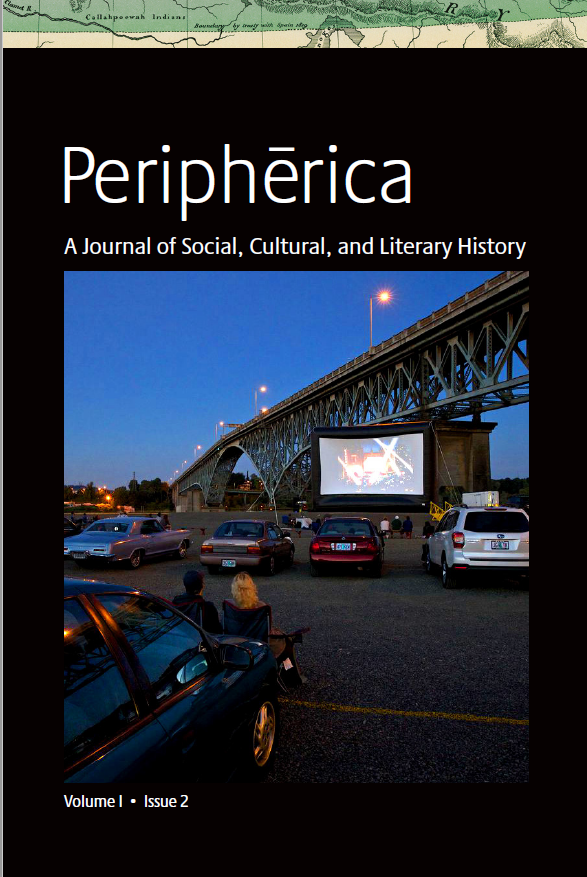Para gustos, los colores. El matizado mundo delirante de los géneros: la ‘patergaynidad’ en otro tipo de familia en <i>Azul y no tan rosa</i> de Miguel Ferrari
DOI:
https://doi.org/10.5399/uo/peripherica.1.2.9Abstract
Blue and Not So Pink (2012), created by Miguel Ferrari as director and screenwriter, received innumerable positive and negative critiques. In spite of the negative evaluations, the film managed to become a great box office success in Venezuela and in 2013 obtained the Goya Award for the best Spanish American film.
This study will analyze the film’s most significant themes; that is, that the consideration of human diversity as an element should be accepted in our societies, the possibility of giving voice to persons who suffer discrimination and the issue of self-acceptance. The notion that the film proposes that there should be other types of families in our societies will be considered: families with gay parents, those with only one parent, and therefore, families that are formed with no blood relationship whatsoever. The trajectory of the main characters within parameters that are juxtaposed and, at the same time, complement each other will be observed—the private and public world, the social sphere and the familial one. Consequently, the transformation that occursin the family unit to include more unbiased parental rights for homosexuals and transexuals in the formation of a new kind of family core will likewise be
examined.
By way of conclusion, it will be observed how the musical diversity of the film is developed intradiegetically to support gender diversity, as well as an examination of the concept of gender within heterocentric society and the way in which relationships of homosexual couples and transgender couples challenge patriarchal society and the dichotomous, binary system it adopted.
References
Arzola, Daniel. “Azul y no tan rosa y cien colores más”. Blogspot. arzolad.blogspot.com/2012/12, 4 de diciembre de 2012. Web. 14 de febrero de 2015.
Azul y no tan rosa. Dir. Miguel Ferrari. TLA Releasing, 2013. DVD.
Barriga, José. “Critica Azul y no tan rosa”. Cine 2012, Críticas 2012. Web. 14 de febrero de 2015.
Díaz Rodríguez, Alba. “Educación y género”. Colección Pedagógica Universitaria 40 (julio-diciembre 2003). Web. 8 de febrero de 2015.
La ley del deseo. Dir. Pedro Almodóvar. El Deseo, SA. 1987. VHS.
Lamas, Marta. “La perspectiva de género”. La Tarea: Revista de Educación y Cultura (diciembre 1995). Guadalajara, México. Web. 5 de febrero de 2015.
Murguialday, Clara. “Género”. Diccionario de Acción Humanitaria y Cooperación al Desarrollo, 2005-06. Web. 5 de febrero de 2015.
No se lo digas a nadie. Dir. Francisco Lombardi. Picture This! Entertainment, 2000. DVD.
Montes, Jaime. “Padres que son ellos mismos gays o lesbianas”. Ensayos sobre homosexualidad, 2008. Web. 5 de febrero de 2015.
“Poema”. Letra de Eduardo Bianco, música de Mario Melfi. Grabada por la orquesta de Francisco Canaro y cantada por Roberto Maida, 1925.
Ramón, Esteban. “Azul y no tan rosa, la película que ha sacado al cine venezolano del armario”. RTVE.es, 21 abril, 2014. Web. 5 de febrero de 2015.
Rocha Sánchez, Tania Esmeralda. “Desarrollo de la identidad de género desde una perspectiva psico-socio-cultural: un recorrido conceptual”. Interamerican Journal of Psychology 43.2 (agosto 2009). Web. 5 de febrero de 2015.
“Rueda de prensa de Azul y no tan rosa”. Cine Maldito, 24 abril de 2014. Web. 8 de febrero de 2015.
Smith, Paul Julian. Desire Unlimited: The Cinema of Pedro Almodóvar. London and New York: Verso, 1994.
Tavárez, Felicia. “Entrevista, Miguel Ferrari, director de Azul y no tan rosa”. El Antepenúltimo Mohicano: Revista Independiente de Actualidad y Análisis Cinematográfico 17 abril, 2014. Web. 8 de febrero de 2015.



